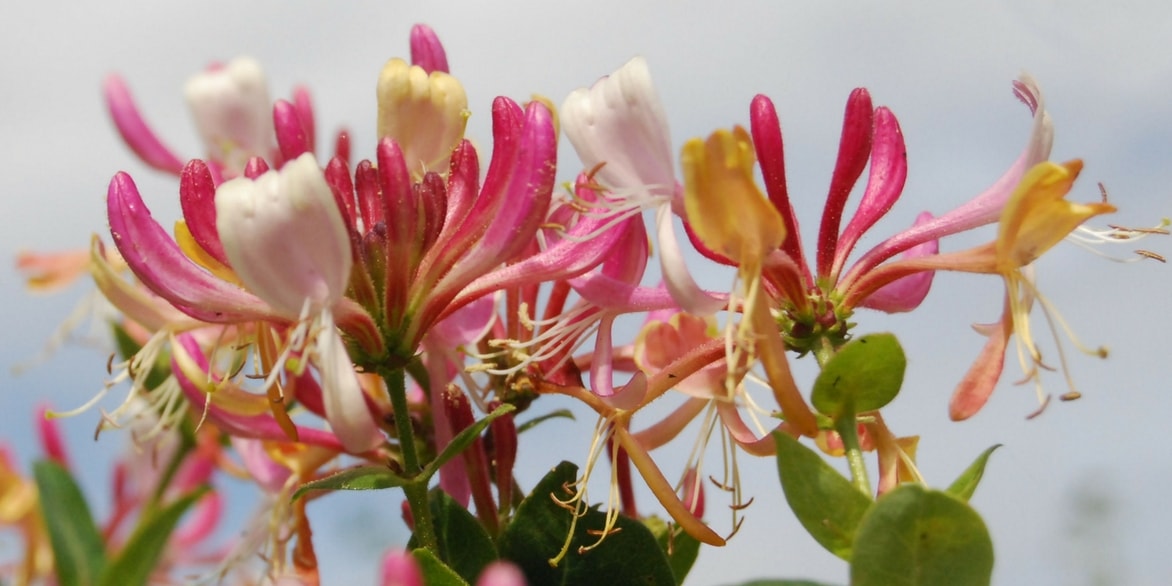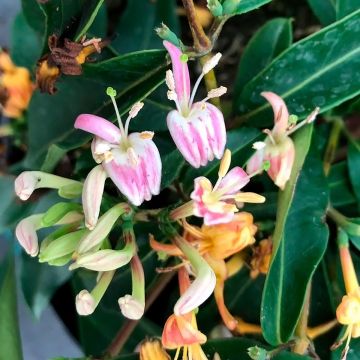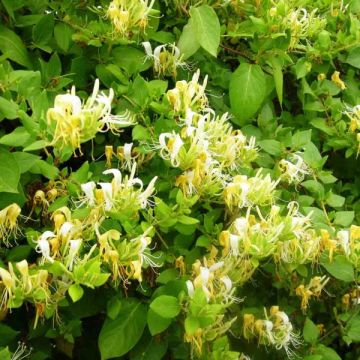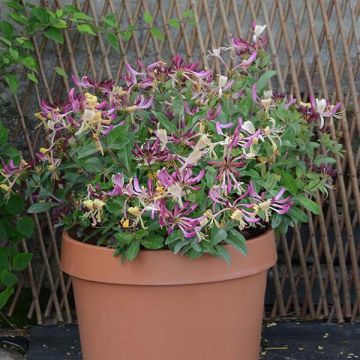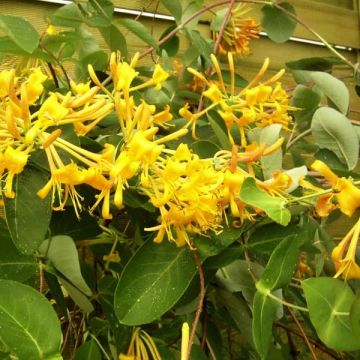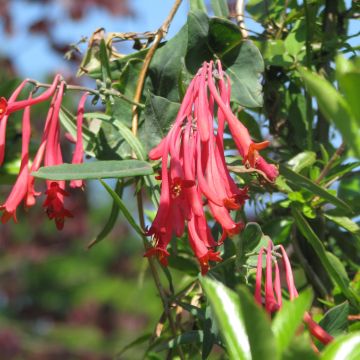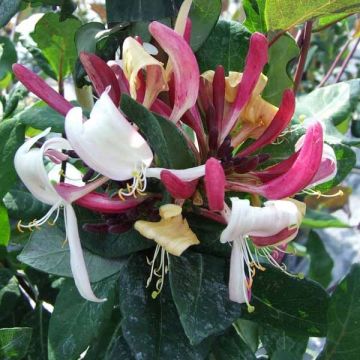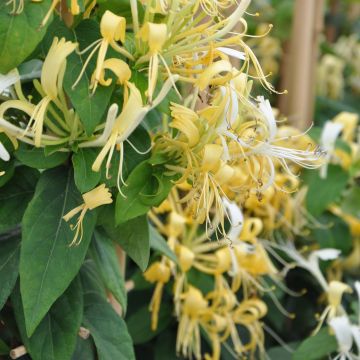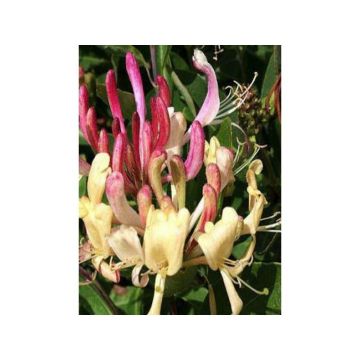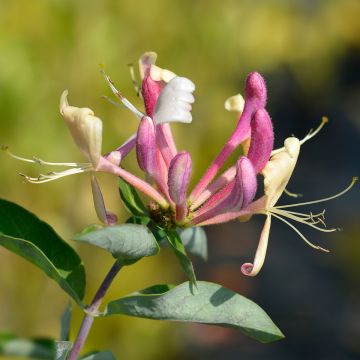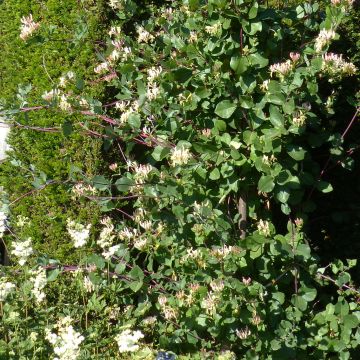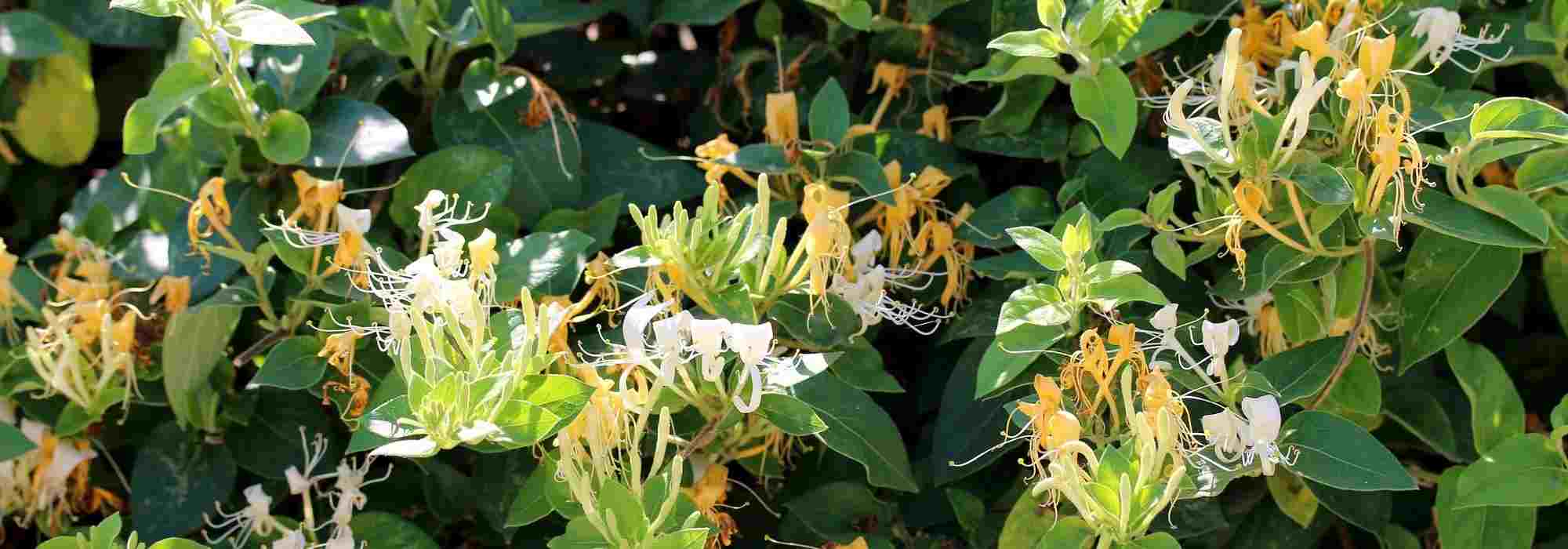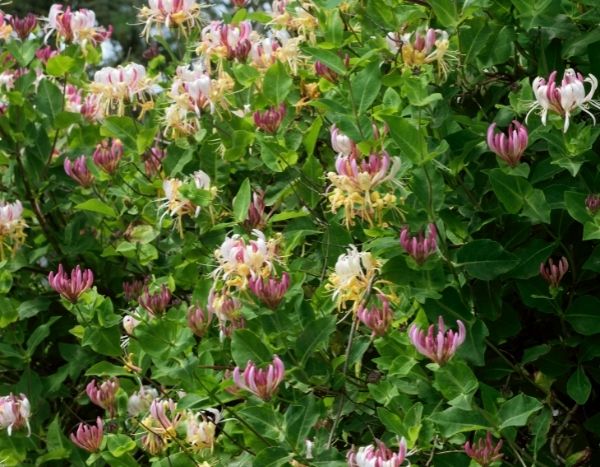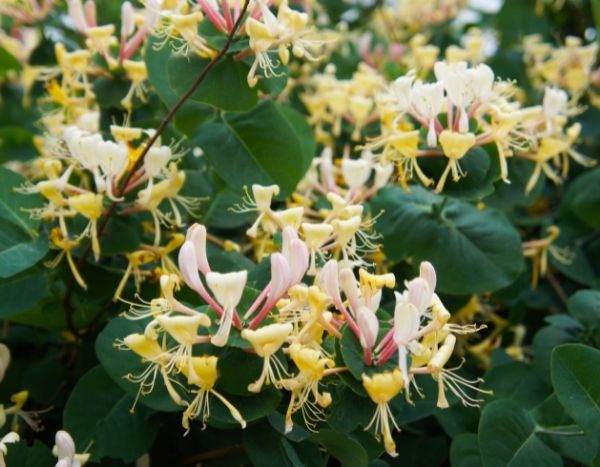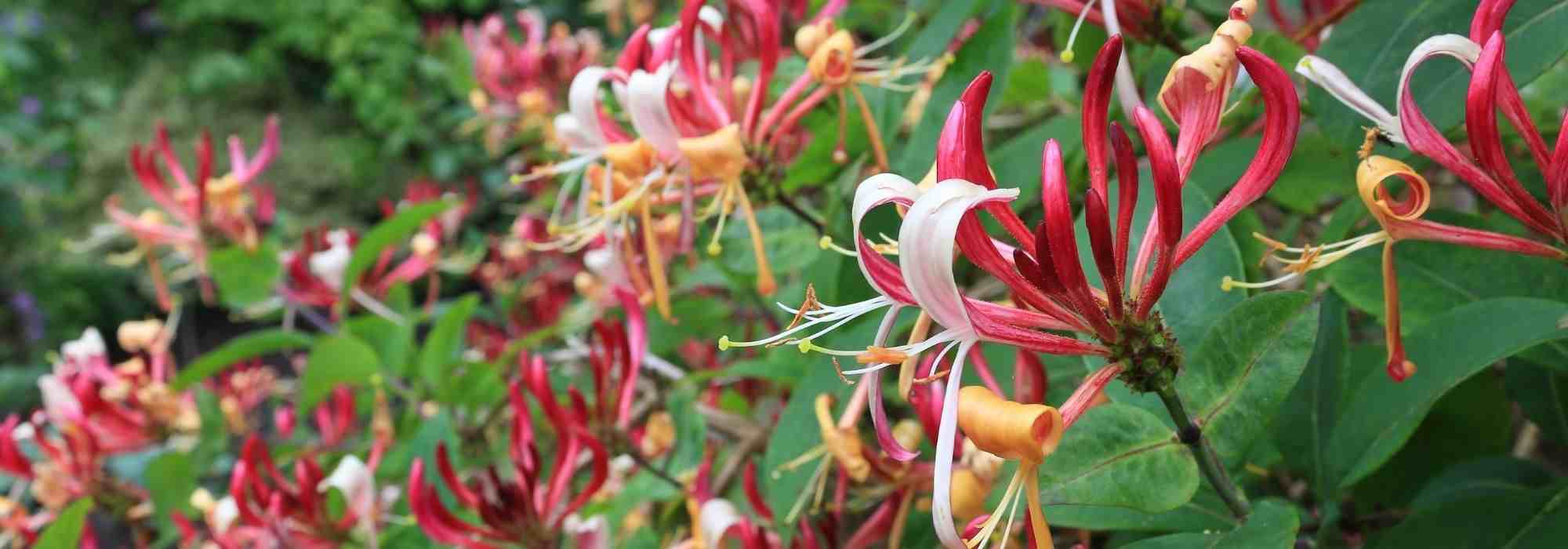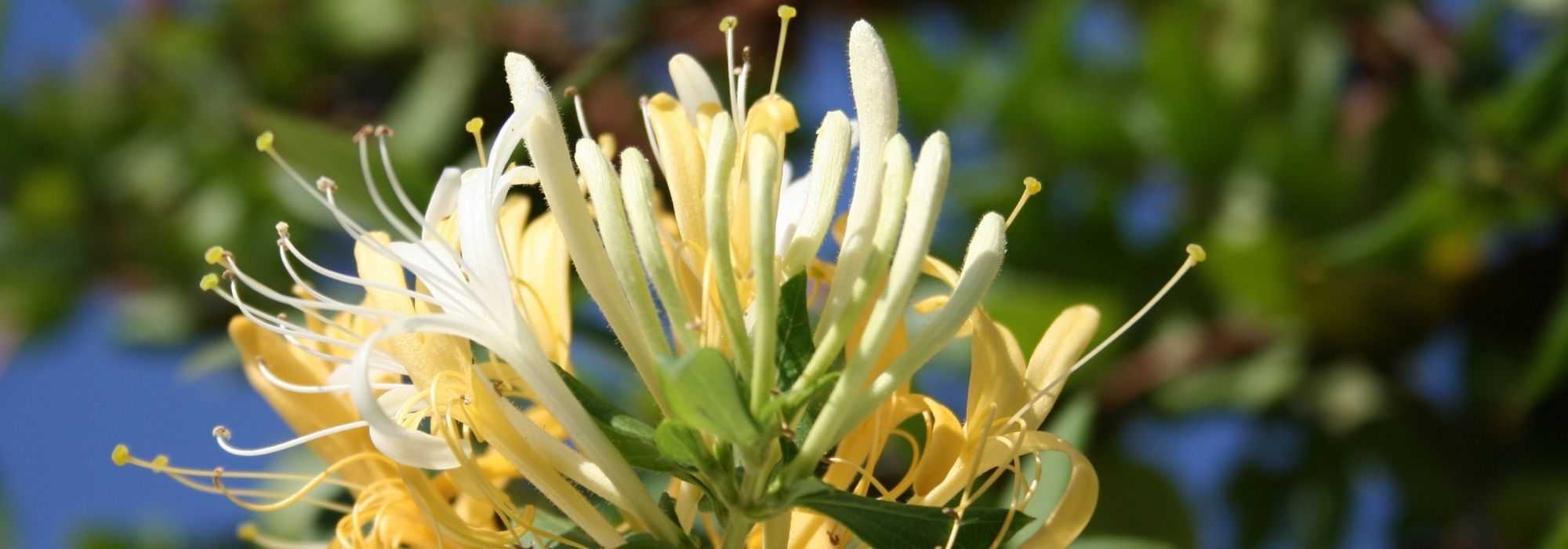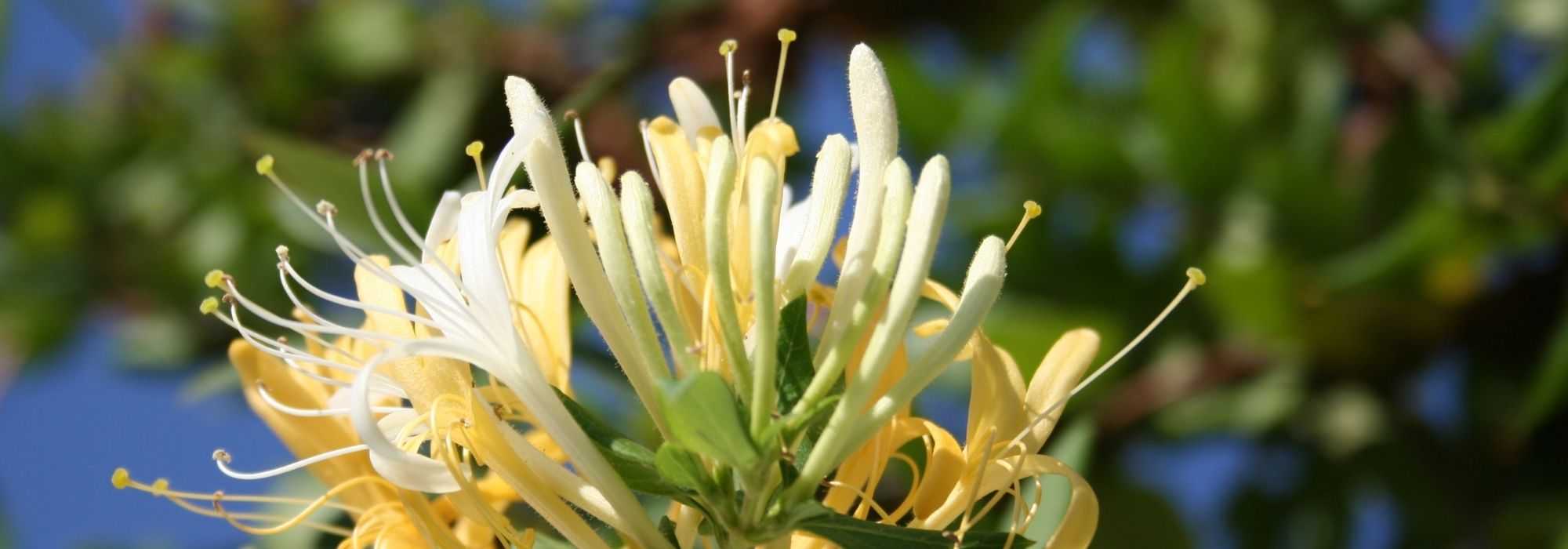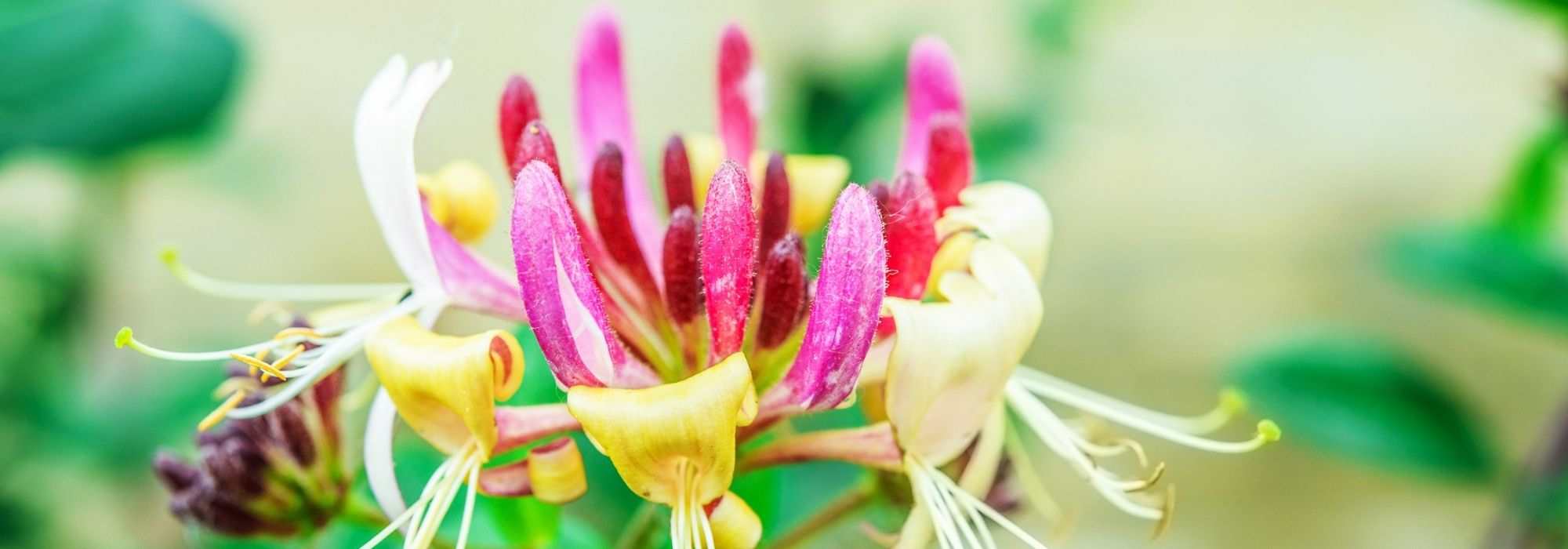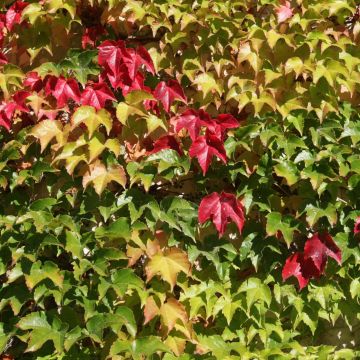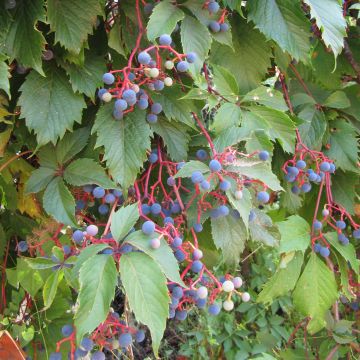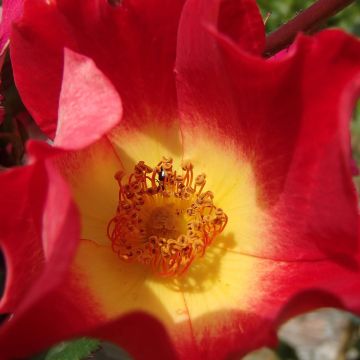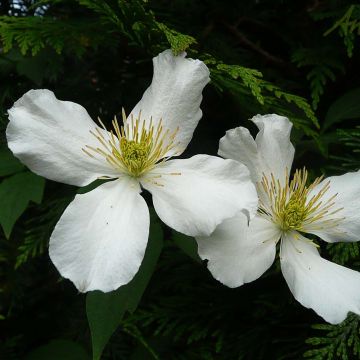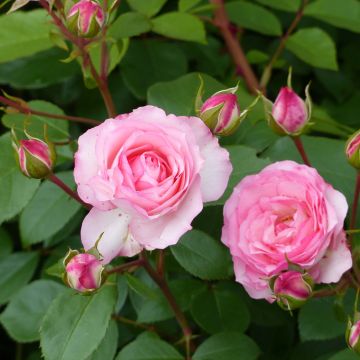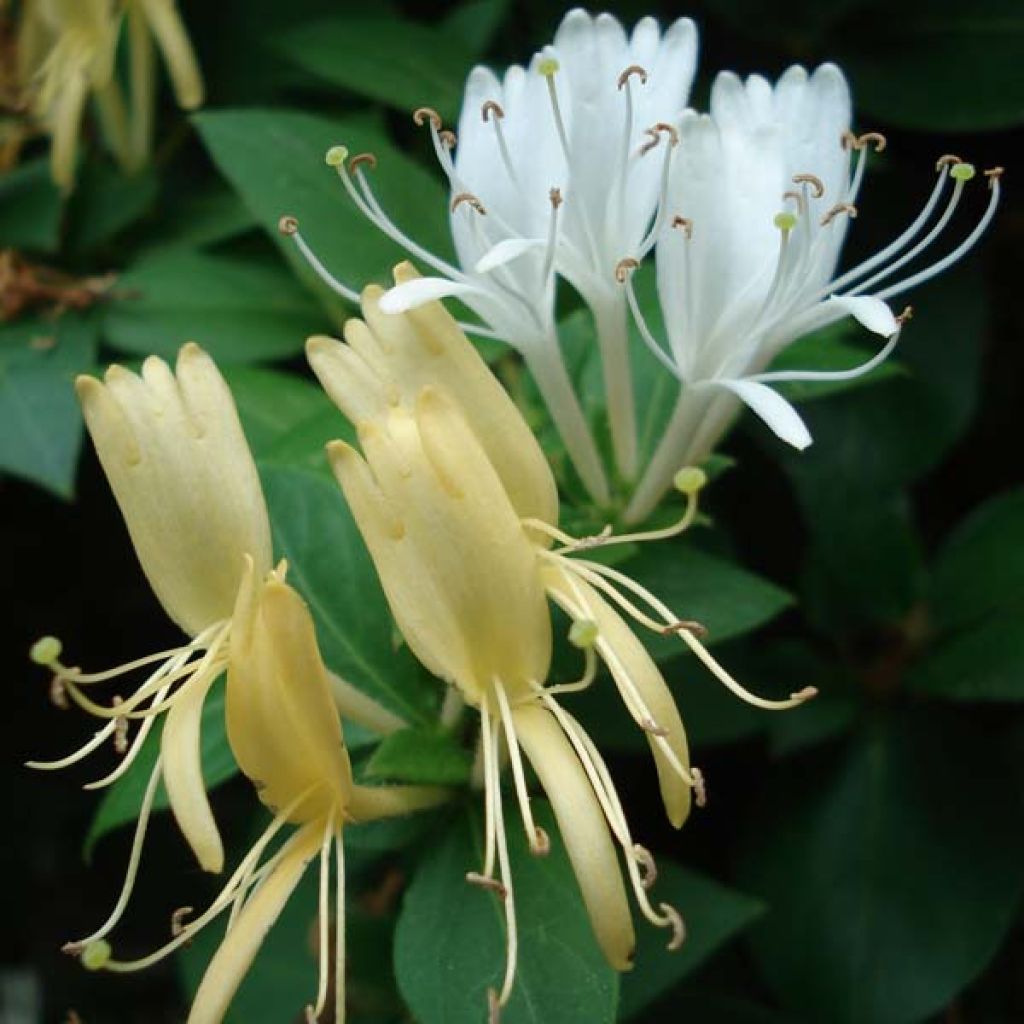

Lonicera japonica Halliana


Lonicera japonica Halliana
Lonicera japonica Halliana
Lonicera japonica Halliana
Japanese Honeysuckle, Golden-and-Silver Honeysuckle, Chinese Honeysuckle
Purchased and planted in September 2023, struggled to keep it alive mainly due to Honeysuckle Weevils and powdery mildew. These two issues should be included in the plant's technical sheet! Currently, the honeysuckle is slowly growing... but it needs to be monitored closely!
Patrick, 05/10/2024
Special offer!
Receive a €20 voucher for any order over €90 (excluding delivery costs, credit notes, and plastic-free options)!
1- Add your favorite plants to your cart.
2- Once you have reached €90, confirm your order (you can even choose the delivery date!).
3- As soon as your order is shipped, you will receive an email containing your voucher code, valid for 3 months (90 days).
Your voucher is unique and can only be used once, for any order with a minimum value of €20, excluding delivery costs.
Can be combined with other current offers, non-divisible and non-refundable.
Home or relay delivery (depending on size and destination)
Schedule delivery date,
and select date in basket
This plant carries a 6 months recovery warranty
More information
We guarantee the quality of our plants for a full growing cycle, and will replace at our expense any plant that fails to recover under normal climatic and planting conditions.
Would this plant suit my garden?
Set up your Plantfit profile →
Description
The Hall's Japanese Honeysuckle, or Lonicera japonica, is a vigorous and hardy vine-plant. Its long voluble stems quickly climb trellises, fences, and arches, greening them with their semi-evergreen leaves. But it is in summer that this perennial reveals its most beautiful asset; its generous, long, and highly fragrant flowering. It is adorned with multiple delicate flowers in fresh and soft shades that bring the garden to life with the buzzing of pollinating insects. They are white when they first bloom, gradually turning into a lovely creamy yellow.
Belonging to the caprifoliaceae family, this climbing plant is not picky about its growing conditions. It withstands frost and inclement weather and does not require special care. Its hardiness has allowed it to colonize many regions of the world. However, it prefers well-drained, rather rich and moist soils. A sunny exposure will allow it to bloom abundantly, but it can tolerate a semi-shaded position, especially if the sun is too scorching. Its impressive vigor may require regular pruning (in early winter) if you wish to maintain an orderly appearance. Otherwise, let it grow as it pleases in a wild corner of the garden. Its long stems will twine around any support they encounter along the way. They can reach a considerable size (from 5 to 10 m (16 to 33ft)). They can also crawl and form a ground cover. Covered with simple, ovate, opposite, and semi-evergreen leaves, a dense canopy forms, providing refuge for birds. From June onwards, a multitude of tubular flowers measuring 3-4 cm (1-2in) appear and continue to bloom until October. They display a slender and delicate silhouette. Divided into two lips, they expose their prominent stamens and pastel shades: white and creamy yellow. Their fragility does not suggest that they can emit such a powerful fragrance. To enjoy it, do not hesitate to plant it near passageways, near the terrace, and pick small bouquets that will perfume your interior. Later on, small black globular berries with bluish reflections take over. Beware, they are toxic.
The Hall's Japanese Honeysuckle is unmatched for covering a wall, hedge, or even a slope. Its fast growth and robustness make it an ally for colonizing large surfaces with a natural look. Moreover, it also provides shelter and cover for various fauna. To complement this, our "flowering fallows and meadows" will allow you to choose whether you want to attract butterflies, bees, or birds.
Lonicera japonica Halliana in pictures
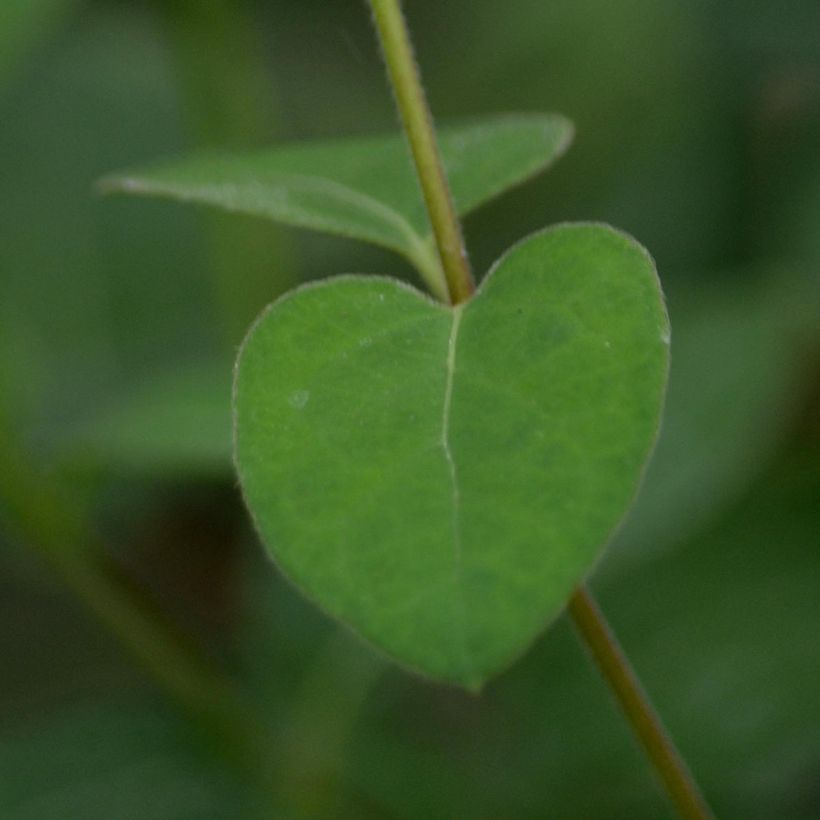

Plant habit
Flowering
Foliage
Botanical data
Lonicera
japonica
Halliana
Caprifoliaceae
Japanese Honeysuckle, Golden-and-Silver Honeysuckle, Chinese Honeysuckle
Cultivar or hybrid
Other Honeysuckle
View all →Planting and care
The Japanese honeysuckle 'Halliana' thrives in any good deep garden soil, preferably not too chalky, rather rich and fresh. If the substrate tends to dry out, consider watering in the first summers or placing the foot in the shade.
Prefer a sunny exposure to promote flowering. A semi-shaded situation will also suit it, especially if the sun is scorching in your region.
Practice a cleaning pruning every year if you want to maintain an orderly shape. Operate in early winter to not compromise flowering, which occurs on the wood of the year. However, it is possible to severely cut back an old subject to completely renew the structure when it forms a thick bun consisting in part of dead wood. This restoration will take place over one or two years.
Honeysuckles are hardy climbing plants ideal for quickly dressing a wall or arbor. Provide them with support, they will cling on their own. We love them for their long flowering and wonderful fragrance. Our advice: Install them near your terrace to fully enjoy their intoxicating fragrance, which intensifies in the morning and evening.
Planting period
Intended location
Care
Planting & care advice
-
, onOrder confirmed
Reply from on Promesse de fleurs
Similar products
Haven't found what you were looking for?
Hardiness is the lowest winter temperature a plant can endure without suffering serious damage or even dying. However, hardiness is affected by location (a sheltered area, such as a patio), protection (winter cover) and soil type (hardiness is improved by well-drained soil).

Photo Sharing Terms & Conditions
In order to encourage gardeners to interact and share their experiences, Promesse de fleurs offers various media enabling content to be uploaded onto its Site - in particular via the ‘Photo sharing’ module.
The User agrees to refrain from:
- Posting any content that is illegal, prejudicial, insulting, racist, inciteful to hatred, revisionist, contrary to public decency, that infringes on privacy or on the privacy rights of third parties, in particular the publicity rights of persons and goods, intellectual property rights, or the right to privacy.
- Submitting content on behalf of a third party;
- Impersonate the identity of a third party and/or publish any personal information about a third party;
In general, the User undertakes to refrain from any unethical behaviour.
All Content (in particular text, comments, files, images, photos, videos, creative works, etc.), which may be subject to property or intellectual property rights, image or other private rights, shall remain the property of the User, subject to the limited rights granted by the terms of the licence granted by Promesse de fleurs as stated below. Users are at liberty to publish or not to publish such Content on the Site, notably via the ‘Photo Sharing’ facility, and accept that this Content shall be made public and freely accessible, notably on the Internet.
Users further acknowledge, undertake to have ,and guarantee that they hold all necessary rights and permissions to publish such material on the Site, in particular with regard to the legislation in force pertaining to any privacy, property, intellectual property, image, or contractual rights, or rights of any other nature. By publishing such Content on the Site, Users acknowledge accepting full liability as publishers of the Content within the meaning of the law, and grant Promesse de fleurs, free of charge, an inclusive, worldwide licence for the said Content for the entire duration of its publication, including all reproduction, representation, up/downloading, displaying, performing, transmission, and storage rights.
Users also grant permission for their name to be linked to the Content and accept that this link may not always be made available.
By engaging in posting material, Users consent to their Content becoming automatically accessible on the Internet, in particular on other sites and/or blogs and/or web pages of the Promesse de fleurs site, including in particular social pages and the Promesse de fleurs catalogue.
Users may secure the removal of entrusted content free of charge by issuing a simple request via our contact form.
The flowering period indicated on our website applies to countries and regions located in USDA zone 8 (France, the United Kingdom, Ireland, the Netherlands, etc.)
It will vary according to where you live:
- In zones 9 to 10 (Italy, Spain, Greece, etc.), flowering will occur about 2 to 4 weeks earlier.
- In zones 6 to 7 (Germany, Poland, Slovenia, and lower mountainous regions), flowering will be delayed by 2 to 3 weeks.
- In zone 5 (Central Europe, Scandinavia), blooming will be delayed by 3 to 5 weeks.
In temperate climates, pruning of spring-flowering shrubs (forsythia, spireas, etc.) should be done just after flowering.
Pruning of summer-flowering shrubs (Indian Lilac, Perovskia, etc.) can be done in winter or spring.
In cold regions as well as with frost-sensitive plants, avoid pruning too early when severe frosts may still occur.
The planting period indicated on our website applies to countries and regions located in USDA zone 8 (France, United Kingdom, Ireland, Netherlands).
It will vary according to where you live:
- In Mediterranean zones (Marseille, Madrid, Milan, etc.), autumn and winter are the best planting periods.
- In continental zones (Strasbourg, Munich, Vienna, etc.), delay planting by 2 to 3 weeks in spring and bring it forward by 2 to 4 weeks in autumn.
- In mountainous regions (the Alps, Pyrenees, Carpathians, etc.), it is best to plant in late spring (May-June) or late summer (August-September).
The harvesting period indicated on our website applies to countries and regions in USDA zone 8 (France, England, Ireland, the Netherlands).
In colder areas (Scandinavia, Poland, Austria...) fruit and vegetable harvests are likely to be delayed by 3-4 weeks.
In warmer areas (Italy, Spain, Greece, etc.), harvesting will probably take place earlier, depending on weather conditions.
The sowing periods indicated on our website apply to countries and regions within USDA Zone 8 (France, UK, Ireland, Netherlands).
In colder areas (Scandinavia, Poland, Austria...), delay any outdoor sowing by 3-4 weeks, or sow under glass.
In warmer climes (Italy, Spain, Greece, etc.), bring outdoor sowing forward by a few weeks.






























